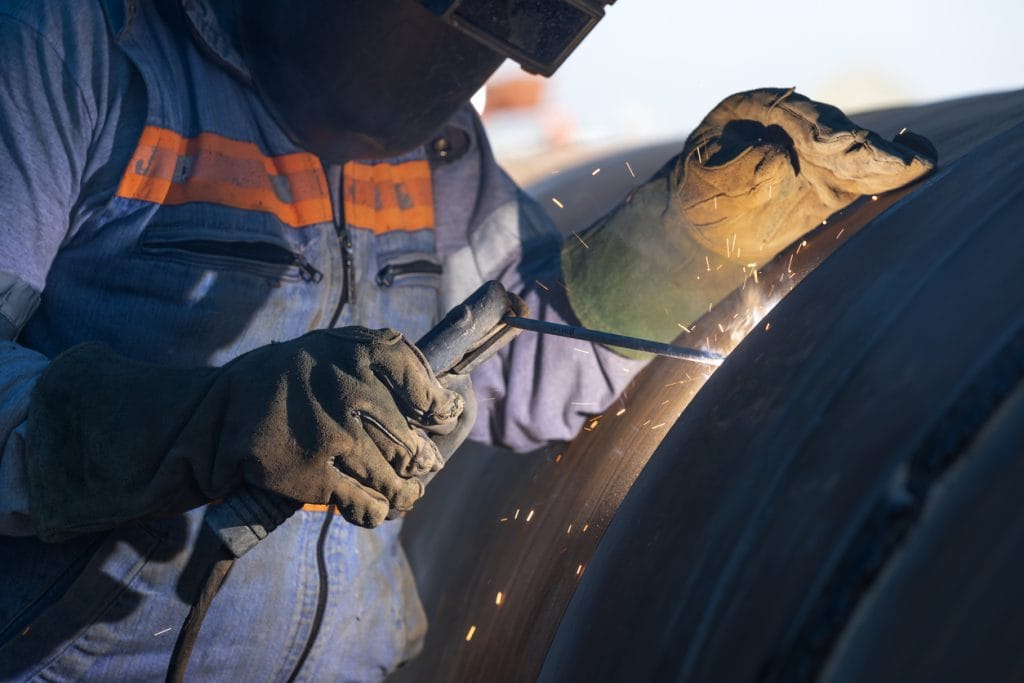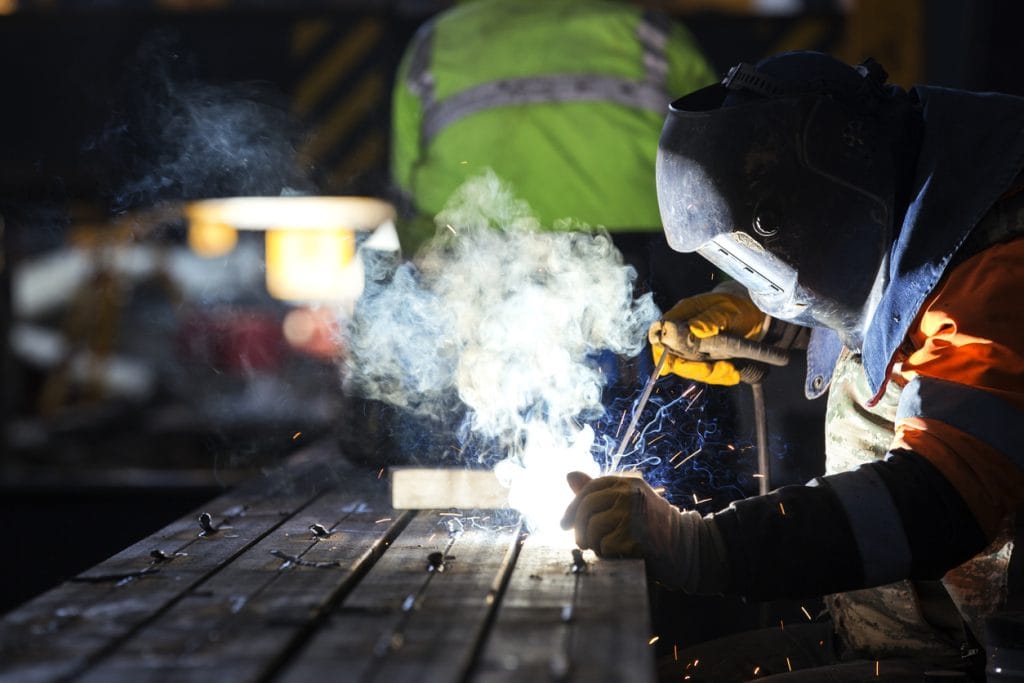What Does MMA Mean in Welding?
MMA stands for manual metal arc, a style of welding in which an electric arc burns between the electrode flux coated metal rod and the workpiece, which both melt to create the weld. It’s one of the most popular and commonly utilised arc welding techniques around. It may also be referred to as shielded metal arc welding (abbreviated to SMAW), flux shielded arc welding and stick welding. Amongst other things, it is commonly used to weld steel and iron. Today, we’re going to take a closer look at MMA welding, how it works, and what it’s used for.
What is MMA Welding?
In MMA welding, an electric current flows through a metal electrode, or ‘stick’, forming an arc between the end of the flux coated electrode and the workpiece. The arc melts both the metal on the workpieces that are to be joined (the base metal) and the metal in the rod (the filler metal). As the melted filler metal is ejected from the rod, it coalesces with the melted base metal to form the weld. Since the electrode is constantly melting and becoming a part of the welded structure, MMA welding is a consumable electrode process.
As the electrode is heated, the flux coating releases protective gases that help to shield the weld and stabilise the arc. The remaining coating melts and covers the weld with a protective layer of slag that aids in shaping – but it must be removed once the weld has solidified. Since the gases produced by the flux coating completely protect the weld, there’s no need for other shielding equipment like regulators or hoses. This means that, in comparison to other welding processes, MMA welding equipment is often simplistic, and the quality of the weld will be determined by operator skill.

MMA Welding Power Sources
As mentioned earlier, MMA welding equipment is often very straightforward, sometimes as simple as only having two controls on the machine – one for current and one for polarity. Two insulated wires and connected to the welding machine. One lead ends in a clamp that is attached to the workpiece – this is called the work lead. The other wire leads to an electrode holder, which grips the end of the electrode that isn’t coated in flux.
Polarity
The polarity of the MMA welding setup determines how the electricity flows to the workpiece and back to the machine. The current will either be in AC or DC. In AC, the directional flow of electricity constantly changes between the leads, but in DC, one lead is always positive and the other negative. MMA welding regularly uses DC, but it is best to check your welding machine manufacturers guidelines to ensure you’re operating with the correct polarity.
Electrodes in MMA Welding
MMA welding electrodes can be made from various metal alloys and flux compositions. When choosing an electrode for stick welding, you’ll need to consider the following:
- Is it going to be strong enough?
- Is it compatible with the base metal it will be fusing with?
- Is it compatible with the position of the joint you want to weld?
To make choosing the correct electrode for your application easier, each stick will have a classification code printed onto the flux. This code will denote tensile strength, the flux coating type and the correct welding position.
The chemical composition of the flux material can significantly influence the weld. There are three main groups of electrodes used in MMA welding:
Cellulosic Electrodes
These contain a high level of cellulose in their flux coating, allowing for deep penetration in all positions and a rapid burn off for high welding speeds – but as a result, de-slagging can be difficult.
Rutile Electrodes
These electrodes contain a high proportion of titanium oxide, promoting efficient arc ignition and low spatter. In addition, they offer moderate tensile strength, a good bead and easily removable slag.
Basic Electrodes
Basic electrodes contain high levels of calcium carbonate – limestone – and calcium fluoride. These electrodes are suitable for medium and heavy fabrications where a high-quality weld with good resistance to cracking is required.

Gas in MMA Welding
With MMA welding, you do not need a separate gas, as the electrode flux forms a gas shield as it melts, protecting the molten weld pool and the base metal. This can be convenient, particularly for amateur welders, as you will require less equipment to get started – however, there are downsides to this method.
Deposition rates in MMA welding are low. This rate refers to the amount of useable weld metal that can be deposited onto the base metal continuously without breaks for electrode changing or de-slagging. As a result, MMA has largely been replaced with MIG/MAG welding. You will require gas for MIG welding, but the deposition rates are better, and you’ll get good penetration, strong fusion and a nice weld appearance with minor spatter. In comparison, MMA welds are often less visually attractive. If you’re interested in learning more about MIG welding, take a look at our top tips for MIG welding beginners.
Here at Bottle Gases, we stock a range of welding consumables suitable for various welding styles. We’re also reputable bottled gas suppliers and can supply both hobbyist and professional welders with the gas they need for whichever type of welding you’re working with. Contact us today for more information about 3.9kg propane, 4.5kg butane and more.




